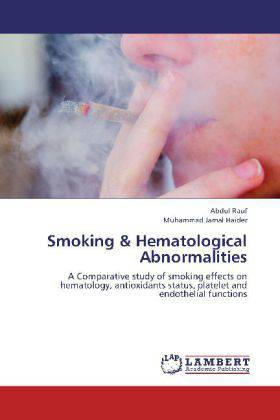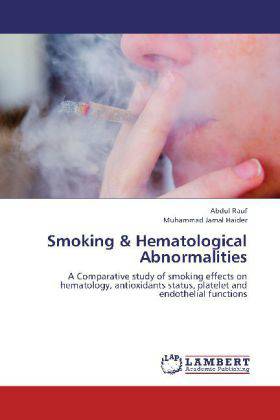
Je cadeautjes zeker op tijd in huis hebben voor de feestdagen? Kom langs in onze winkels en vind het perfecte geschenk!
- Afhalen na 1 uur in een winkel met voorraad
- Gratis thuislevering in België vanaf € 30
- Ruim aanbod met 7 miljoen producten
Je cadeautjes zeker op tijd in huis hebben voor de feestdagen? Kom langs in onze winkels en vind het perfecte geschenk!
- Afhalen na 1 uur in een winkel met voorraad
- Gratis thuislevering in België vanaf € 30
- Ruim aanbod met 7 miljoen producten
Zoeken
Smoking & Hematological Abnormalities
A Comparative study of smoking effects on hematology, antioxidants status, platelet and endothelial functions
Abdul Rauf, Muhammad Jamal Haider
Paperback | Engels
€ 89,45
+ 178 punten
Omschrijving
Cigarette smoking has led to epidemic level increase in the progression of atherosclerosis, chronic obstructive pulmonary disease, cardiovascular disorders and cancer. The effects of smoking on human health have been investigated for the last hundred years, but the exact pathophysiological mechanisms responsible are yet to be completely elucidated. In the present study, effects of smoking on hematological parameters, inflammatory markers, antioxidants, markers of hemostasis and fibrinolysis were investigated among chronic smokers and compared with nonsmokers and ex-smokers. The results of present study indicate oxidative-antioxidants imbalance, low grade inflammatory response; alterations in the markers of reheology, coagulation and endothelial functions, which increase the chances of cardiovascular disorders among smokers. Although these smoking induced effects may persist for many years; most of these alterations return back to normal values within 2-5 years of smoking cessation. Therefore immediate smoking cessation is strongly recommended to smokers as quitting smoking increases life expectancy by reducing the health care risks.
Specificaties
Betrokkenen
- Auteur(s):
- Uitgeverij:
Inhoud
- Aantal bladzijden:
- 192
- Taal:
- Engels
Eigenschappen
- Productcode (EAN):
- 9783847321859
- Verschijningsdatum:
- 21/12/2012
- Uitvoering:
- Paperback
- Afmetingen:
- 150 mm x 220 mm
- Gewicht:
- 290 g

Alleen bij Standaard Boekhandel
+ 178 punten op je klantenkaart van Standaard Boekhandel
Beoordelingen
We publiceren alleen reviews die voldoen aan de voorwaarden voor reviews. Bekijk onze voorwaarden voor reviews.









